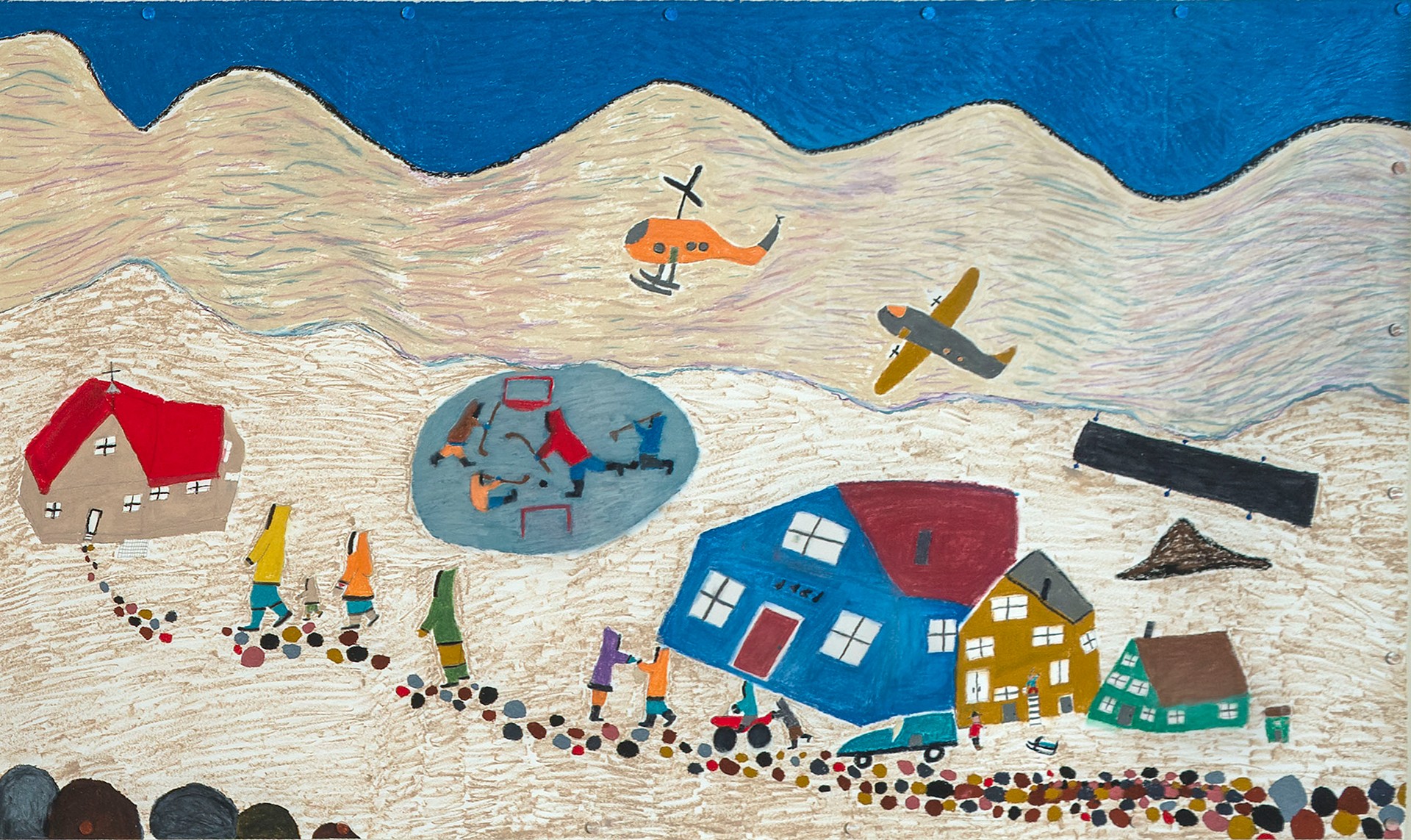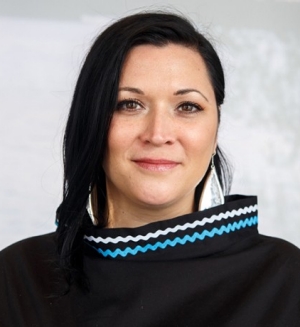In 2018, Igloliorte was awarded a Social Sciences and Humanities Research Council of Canada (SSHRC) grant, under which she’s developing the Inuit Futures in Arts Leadership: The Pilimmaksarniq/Pijariuqsarniq Project. The hope is to radically increase Inuit participation in research and arts-based professional practice.
The project provides training and mentorship opportunities to Inuit and Inuvialuit post-secondary students, called Ilinnaqtuit (learners), at associated arts institutions and universities across Canada. The Winnipeg Art Gallery is a major partner.
All Ilinnaqtuit have been collaborating with the INUA curatorial team to create Nagvaaqtavut: What We Found, the audio guide for the exhibition.
“What’s really exciting about Qaumajuq is that we are going to get the opportunity for more Inuit to get to work there in the future, too — in curatorial processes, in management, in education and across all these different areas where Inuit are going to have the opportunity to lead,” says Igloliorte.
Art Matters
Despite the difficulties of running North America’s largest student-run arts festival during a pandemic, the small army of students who worked on Art Matters this year managed to showcase undergraduate artists with live and online events, podcasts, books and websites.
Along with her team, Joyce Joumaa, exhibitions coordinator for the festival’s 22nd edition, expanded the festival, which ran from February to April. Gallery exhibitions, while reduced in number, took place at a variety of spaces around Montreal.
“As soon as I started organizing last semester, I was committed to in-person activities. I couldn’t ignore the restrictions of the pandemic, but I was so tired of online-only events that we had to do something else,” says Joumaa.
They organized a podcast with Concordia’s VAV Gallery as part of Black History Month, featuring former FOFA gallery curator Eunice Belidor, BFA 12 — now curator of Quebec and Canadian Contemporary Art at the Montreal Museum of Fine Arts — and artist Eve Tagny.
Two student facilitators curated a book featuring essays, interviews and artworks, and Art Matters launched a website containing 22 years of festival archives.
“When you look at Art Matters’ archives, you come to understand how important it is to Montreal,” says Joumaa.
 Detail from “Yesterday and Today,” 2014, by Elisapee Ishulutaq. Inuit (Pangnirtung), 1925–2018.
Detail from “Yesterday and Today,” 2014, by Elisapee Ishulutaq. Inuit (Pangnirtung), 1925–2018.
 Heather Igloliorte
Heather Igloliorte